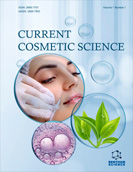Abstract
Aim: This research was conducted to make the option for chemical-based semisynthetic and synthetic hair dyes to overcome the problems with the use of synthetic dyes and the acceptance rate by the public. The work involves the use of some novel natural ingredients with novel combinations.
Methods: The herbal hair dye was prepared y using various natural agents reported to possess the desired properties. The plants were collected from the herbal garden of Dr. VedprakashPatil Pharmacy College, Aurangabad & authenticated by the Dept. of Pharmacognosy. All ingredients were passed through sieves and mixed thoroughly to get a homogenous mixture; the mixture was dissolved in water and applied to the hairs for the evaluation of various parameters such as organoleptic physicochemical, patch test & stability.
Results: This Herbal hair dye prepared in the laboratory is made with all good quality materials. It was tested in the laboratory and was found to be very safe for the regular use of this herbal hair dye after several time intervals of time. All evaluation parameters were found to be within the limits as prescribed for the safe use of hair dye.
Conclusion: The prepared herbal hair dye neither shows any side effects nor skin infections. It nourishes the skin on the scalp and hair. This herbal hair dye also aids in dandruff treatment by removing excess oil from the scalp. If such herbal dye is used frequently or regularly, it will give a manageable, fizz-free colored hair benefiting human as well as the industry. The formulation is natural in origin with effective benefits compared to the marketed formulation and cost-effective.
As the process is simple, small scale cosmetic industry can make use of the technique.
[http://dx.doi.org/10.1186/s12906-015-0563-1] [PMID: 25886964]
[http://dx.doi.org/10.3164/jcbn.2007001] [PMID: 18392106]















